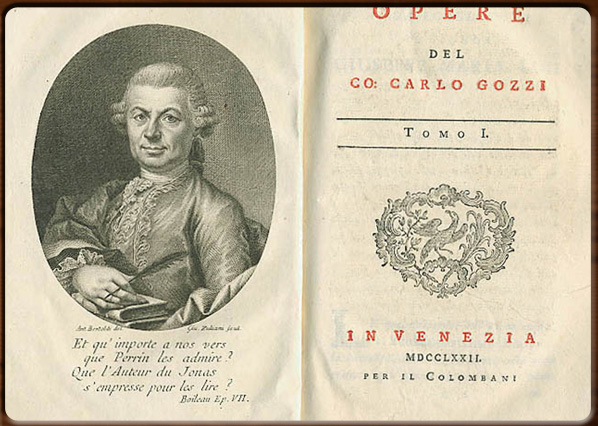
Carlo Gozzi's works. Venice, 1772.

A scene from The Love for Three Oranges


No video
Carlo Gozzi (Venice, 1720-1806) was a writer from an old noble family in Venice. He had a difficult childhood owing to his father’s debts and so had to go out to work at the age of 16. Then, in 1747, together with his brother Gasparo (also a writer) and others, he founded the Accademia dei Granelleschi in Venice, an institution whose literary goals included the preservation of the Tuscan language and literature from foreign influences. He criticised Carlo Goldoni, blaming him for staging plays that were too realistic and plebeian, just like the French. In 1757 Gozzi published his La tartana degli influssi per l'anno 1756, a satiric poem and his L'amore per le tre melarance (The Love of Three Oranges, 1761), a fairytale for theatre.
Gozzi then produced a series of dramatic pieces based on fairytales and these were, of course, an immediate success.
These were also much praised by Wolfgang Goethe, Schlegel, Madame de Staël and Friedrich Schiller translated one of them, Turandot (1762), a five act play of exotic fascination. In 1765 he wrote L'augellin belverde (The Green Bird), a caricature of the ideology of the century, compared to traditional wisdom. All Carlo Gozzi’s work is full of constant and harsh polemics against the principles of the Enlightenment. In 1797 he wrote his Memorie inutili (Useless Memoirs), an autobiography in three volumes containing many happy memories of his life and Venice of the time.
1600 - 1700 - - rev. 0.1.7